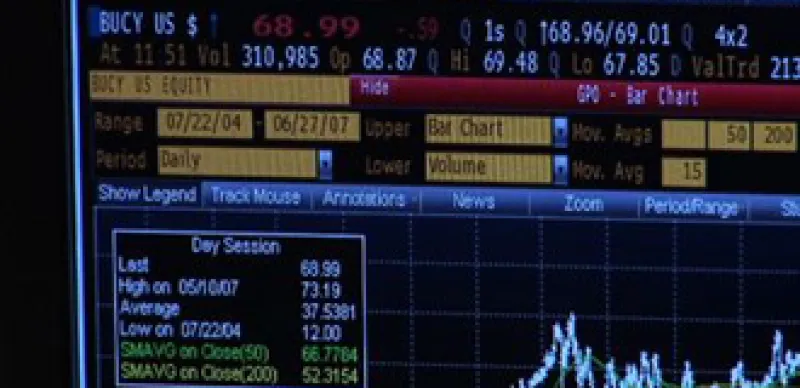
Firms today face a challenging global foreign exchange (FX) market environment that remains fragmented and extremely competitive. All market participants - buy-side firms in particular - are under increased pressure to pursue best execution and reduce trading costs.
Electronic trading in the FX market continues to grow at a staggering pace. According to Greenwich Associates report “Electronic Foreign Exchange: Booming in Crisis,” published in March 2009, the 37 percent rate at which electronic FX trading increased last year was almost triple the 13 percent year-over-year increase in total FX trading volume. Over the same time period, the proportion of global FX trading conducted on electronic platforms jumped from 44 percent to 53 percent.
So what is wrong with this picture? In short, the market has reached an inflection point where the very technology that helped fuel this growth is becoming outdated. Traditional FX trading solutions – single-dealer platforms and multi-bank (electronic communication networks) ECNs – can no longer meet the needs of sophisticated institutional traders. Unfortunately, the challenges that firms face extend well beyond the front office.
Companies are under tremendous pressure to minimize trading costs and increase operational efficiencies firm-wide. As such, the challenges facing firms today is twofold: deploy advanced technology that will allow FX traders to navigate - and exploit - today's complex marketplace, but do so with an eye towards long-term value and scalability.
The question, then, is what constitutes “advanced trading technology” in the world of FX. To answer that, first consider the limitation of traditional FX platforms.
Single-Dealer Execution Platforms. All leading FX dealers maintain such platforms, based on a fairly standardized ASP or software as a service (SaaS) model. Yet leading institutions and hedge funds can have relationships with as many as seven or eight different FX dealers, which introduces numerous trading and workflow challenges.
First and foremost, single-dealer platforms provide liquidity from only one source, limiting price discovery. Using multiple-dealer platforms to try solving this problem leads to troubles in both the front and back offices (e.g. desktop issues and a tangle of independent workflow connections). In addition, the SaaS model these platforms are based on means they cannot be customized to meet client-specific trading or integration requests.
ECNs. What about anonymous electronic communication networks (ECNs)? Don’t they address the shortcomings of single-dealer platforms by aggregating liquidity from numerous sources? To a certain extent, they do. However, ECNs also rely on a model that does not address the importance of dealer-client relationships.
FX remains a highly fragmented over-the-counter (OTC) market. Dealers are still the primary source of FX liquidity, and the pricing and size they offer is counterparty-specific (based on a client’s credit, trading history, etc.). In an anonymous ECN model, banks and other liquidity providers do not know who the potential counterparty is. To mitigate their risk, they offer limited size and “one size fits all” pricing that might be markedly different from what a client would receive under a disclosed trading model.
For the buy-side, the challenge is how to combine the benefits of single-dealer platforms and ECNs in a single trading system. In response, firms are increasingly turning to advanced, broker-neutral platforms that can give clients the best of both worlds – consolidated liquidity and optimal pricing. In this model, traders can view and act on direct, streaming liquidity from every provider with whom they have a relationship – banks, dealers and ECNs – in a single, highly customizable trading interface.
From the dealers’ perspective, this is essentially the same as delivering streaming quotes directly via their single-bank system – the counterparty is known, the quote is adjusted according to the client’s credit and sales profile and it is delivered to that client alone.
From the client’s perspective, they can trade against a consolidated book of streaming quotes from multiple dealers, yet maintain and leverage the relationships they have with their liquidity providers so that they receive optimal pricing and size. Ultimately, this model gives FX market participants the greatest control of their order flow, while driving efficiencies throughout the trade lifecycle.
However, this gets us only halfway there. Today’s trading systems have to be flexible and easy to integrate into a firms' existing workflow infrastructure. Given the increased focus on straight through processing and operational efficiencies, tight integration with legacy and third-party workflow applications is a must. Fortunately, there are broker-neutral FX aggregation systems that offer the kind of workflow integration that clients require. The same technology that allows these systems to easily add new liquidity providers and adapt to market structure changes also allows them to be easily deployed in complex enterprise environments.
Traditional FX platforms have moved things in the right direction – the days of clients blithely relying on custodian banks to cover their FX needs are certainly drawing to a close – but the market has a long way to go before it realizes true benefits of electronic trading technology. Ultimately, the future of electronic FX lies with technology that can address firms’ most complex trading requirements while providing the kind of long-term value that companies need more than ever.
Harrell Smith is the head of product strategy at Portware, a developer of broker-neutral, automated trading software for global equities, futures, options and FX.






